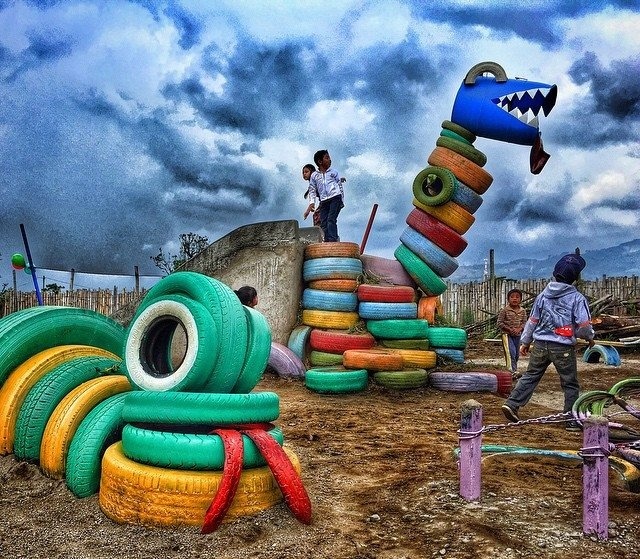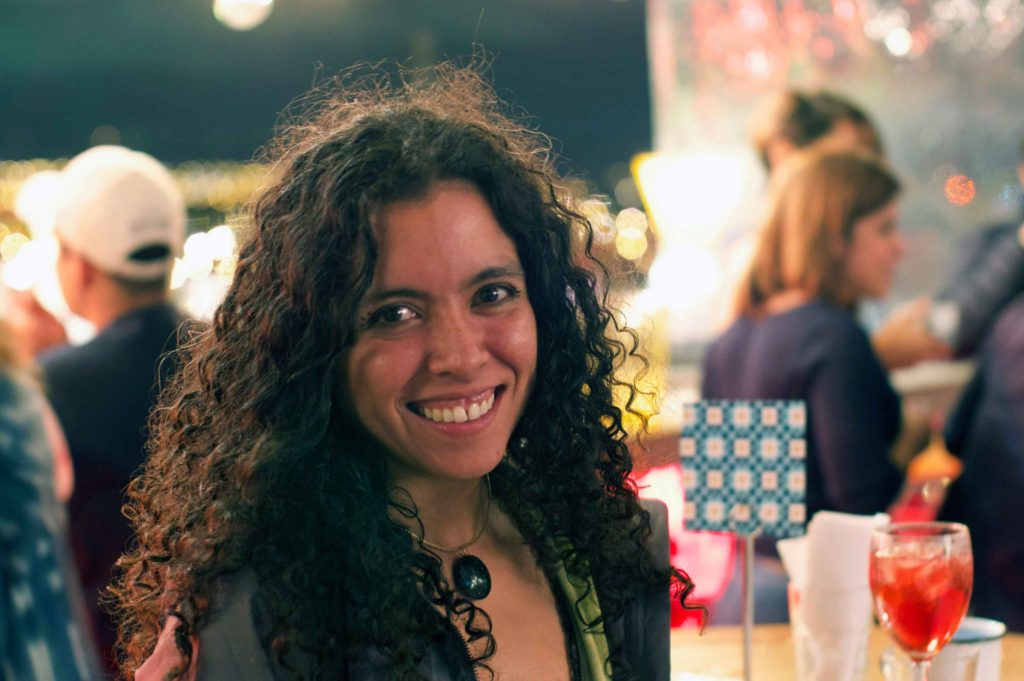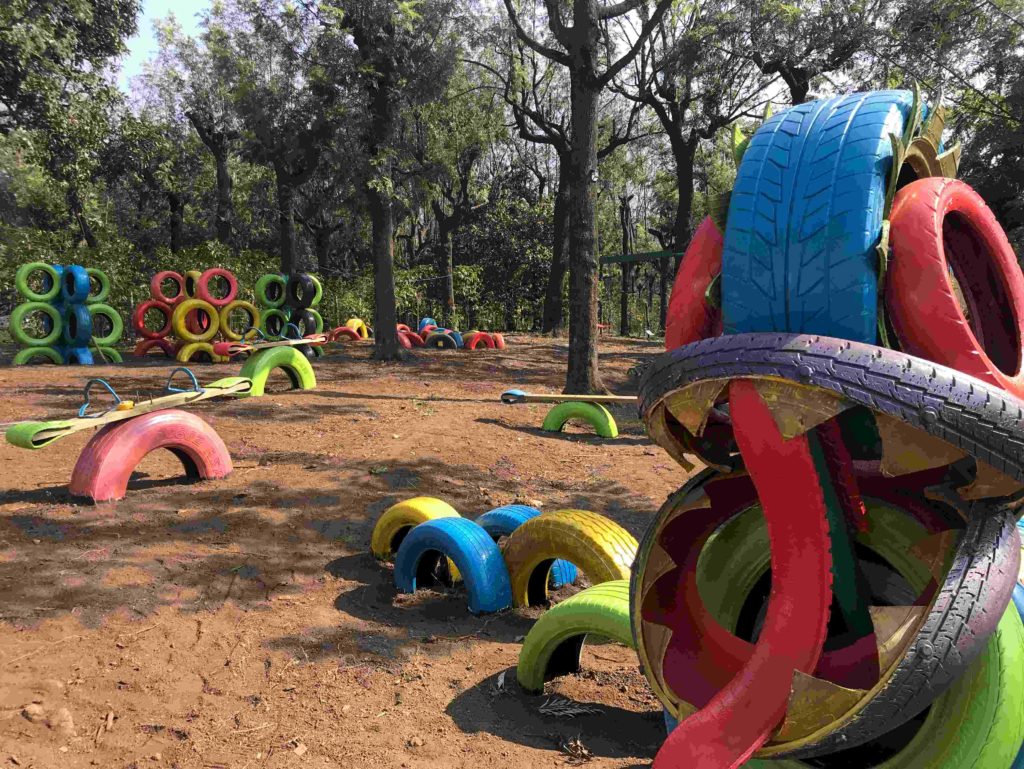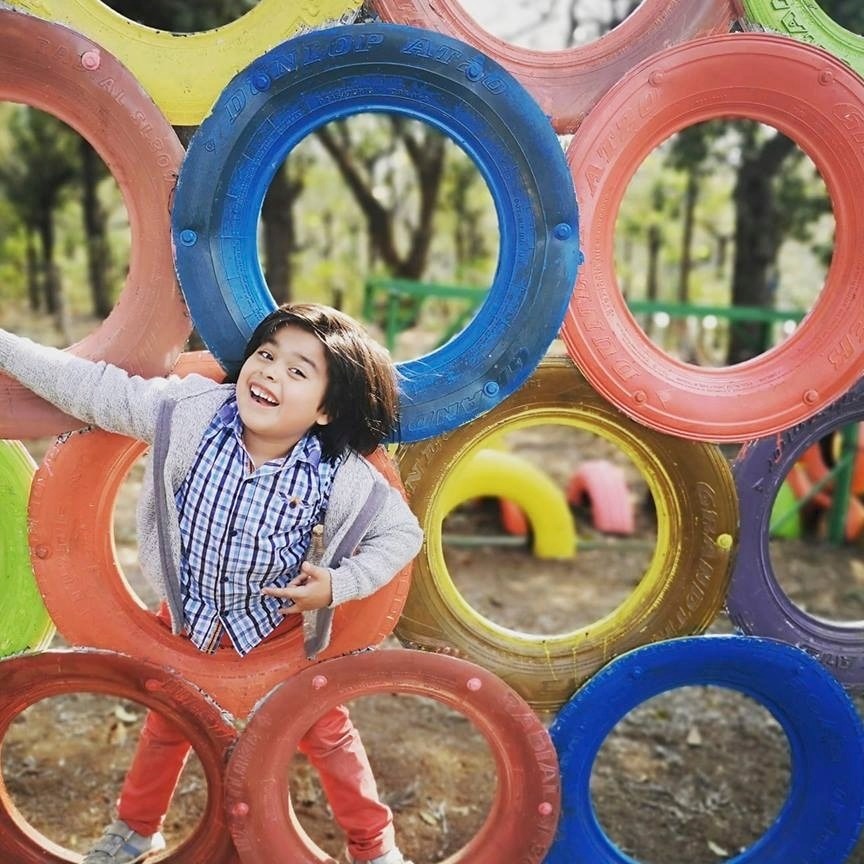I had the pleasure of meeting and chatting with Ancris. With a glass of wine in hand, at her home in La Antigua Guatemala, we learned a little more about her very interesting work. Ancris García Cabezas, 39, was born in Guatemala City. she has lived in La Antigua for 8 years. Architect by profession with a specialisation in permaculture, eco-construction and field work. She is also a muralist and painter as well as founder of Ecocabezas.
Ancris, could you tell us what permaculture is?
It is a worldwide movement of soil care: a way of thinking, and living; in terms of the use of resources, the management of waste and waste itself. It is to take advantage of the spaces that exist. It has to do with planting; to protect the soil so it’s fertile, without fertiliser use so the soil is happy! It’s not just about planting seedlings but where are you going to place the water to irrigate. Take into account the sun, the wind, the environment, whether there are trees, the climate of the place, the altitude, the topography, the architectural considerations of the space so as not to ignore the surroundings, in any of the needs, be it a playground or a house.How would you define your architectural style?
How would you define your architectural style?
Bioclimatic; architecture with ecological interest, although humans by nature are not, we are destructive. I build in wood and when possible, the land itself. They are renewable, anti-seismic resources that are not so common in Guatemala. I use legal harvest circuit wood to avoid deforestation. I recycle tyres for durability and resistance, since 90,000 tyres are discarded per month throughout Guatemala
How did you learn to use all these materials?
First I had a training in permaculture, that helped me think about the reuse of things. One of the principles is observation. One does not get to impose the idea of what one has on the computer. Rather one gets to observe, then listen to what the place tells you and once in that state you can make decisions. All this work came from some creativity workshops that I gave in a region of northern Sololá,a place called Ixtahuacán. The Quiche teachers realised what needs were prioritised for their schools? and they came to the decision that what they needed, in this case, were games for children. It was a very exciting moment and I was also scared because I am an architect not a playground designer!. The internet took me to a platform that had just started in Australia which provided support to people who wanted to make playgrounds on a low budget. I read many links that showed you how to build them and the safety rules that had to be taken into account that I never imagined. The first I built were three playgrounds. With little budget and a lot of stress, we managed to build them in two months! The idea is that these parks are to be inclusive and self-sustaining; that is to say that the construction can include parents, teachers or people who are going to use them and are part of the community. Therefore, the self-sustaining aspect that can be maintained, that the parks do not fall into disuse or abandonment, as they can become dangerous. When I work with people from creative workshops, the construction of parks is something that will involve everyone. Once completed, the children enjoyed it very much, and so after a year I started working on other parks.
How is your creative process? How does it begin and how does your work end? Because I see it as a work.
That’s what we call it-a construction, a work. It’s what I have in common with my painter friends and my theatre friends; what we do is make a work! This is where the blank canvas is and people with expectations, with pressure of money and time. The first step is to observe the place; studying it, seeing it over several moments helps. The places are very eloquent if one is able to listen to them. I always request a topographic plan, contour lines, how many trees does it have? The exact size. The idea is to keep the trees and work with them. Having the plans, on my computer with the use of the Autocad program, I play music and start imagining, depending on the needs.
In the case of playgrounds it has a lot to do with the drawings the children made which I previously asked them to do. From those drawings came the “Slippery Rex”. I also see many references of what is being done in the world. In Tokyo, for example, there is the Tyrannosaurus Rex that measures about 20 meters. Children do not climb it, but it exists as a fantasy figure inside a park. I was inspired by it to make mine that measures three meters and is a real slide, largely using earth so as not to spend much and use little cement. Other drawings are of a turtle, a worm, a dragonfly. I have to plan where to put them! If it is a question of building a house, I have to plan first the needs, the spaces, the levels, everything is a work in the Autocad of scale of the real elements. There are many yawns so so speak between the imagination flying and landing to plans that have a reality!
Regarding the use of the materials, do you have a plan and are you looking for the materials or having the materials make a plan?
It depends on the work, sometimes you already have some materials in place and they can be recycled. In a park that I built they had many trees, some metal structures that I could take advantage of since they were very solid and from there came slides, a truck and a little store. Sometimes it is like a game of Lego-recycle, and save money on materials. Other times there is nothing but land and there begins the search for materials, I use many tyres for example. In another park I worked, there was bamboo as it was on the coast, which I had never worked with. You can say that I lead the orchestra but there are more people specialised in working with materials such as blacksmiths, carpenters, masons, etc. There are many people involved. I take into account where I am and where we are going to save time and money; Tyres and iron are everywhere (although this is a sad thing to say) solves the construction and recycling needs. I have always made a priority for the slides. Those that I have made are always cheerful. They remind me of my childhood. I grew up in a condominium where there was a park and a slide, I saw it as a giant! It was on a hill and they built it with cement taking advantage of the slope of the hill, but at the same time a lot of cement was saved in its construction.
What other disciplines do you include in your construction work?
The inclusion of nature is paramount for me, leaving what was already there where possible or including internal gardens (vertical for example). I like to experiment with things that I have not done before, of techniques that others have already used, even if mistakes are made or can be improved upon.The use of light in spaces is also very important to save energy and to take advantage of natural light. Uses of fertiliser baths, the dry bath, that are not septic but fertiliser generators, that do not contaminate the waters, to make understood that the worlds resources will not last forever. The use of the painted mural is also something that I often include in the constructions.
How many playgrounds have you built?
Ecocabezas have built 12 parks already. One in the Bahamas! There it was different because it was a project of my Playground Ideas allies who added me to the team. I also collaborated by implementing murals at a state school in the center of Bahamas. A park for 400 children.
In what places have you built them?
Most of the playgrounds have been built in schools. The school framework offers great support because there is an internal organisation that they can do since I work on my own, alone. The work is like an orchestra, the contractors are mostly on site, and they can also repair it in the future.
Do you follow up on your work?
Only to which I have access. I analyse what worked and did not work. I conduct interviews with the teachers of the schools. They have explained to me that the children’s performance in school is better because they draw a lot of energy playing, pay more attention, and focus more. Although it takes time getting used to the parks, it is a challenge for them to master them, these challenges apply them in their lives. Their performance improves, their attitude improves, their resolution of conflicts improves. The games are a tool of social transformation.
What are you doing now and how do you see your professional future?
I am finishing the construction of an apartment, starting a studio and planning a house, I am also in conversation with people who want to make playgrounds. As for the future I have many ideas; from making the theme of parks very common and that everyone can who wants to, not just me, but design students, students, other builders and architects. I imagine building healing centres where people instead of going to a hospital can come and be healed. I see myself doing constructions that include nature or houses for the elderly where they can live in natural places and die happily. I would like to see housing groups where friends live together and I will be the one to design those houses! New housing proposals, healing and retirement places and to keep painting!
To learn more about Ecocabezas, contracts or consulting you can visit http://www.ecocabezas.com or write to [email protected]
You can see one of the playgrounds for yourself at Cerveceria Catorce
Interview by Elvira Mendez
